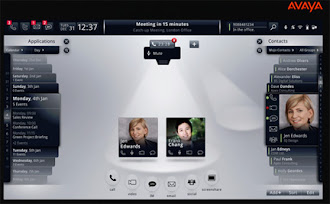On 24 January, 2012, Avaya announced availability of Avaya Flare Communicator for iPad. At the same time, the company gave indications of when Flare Communicator would be available for Windows PCs as well as when the entire Flare Experience would be available on both devices.
Flare Communicator presently supports only a subset of the entire Flare Experience collaboration capabilities. However, by the end of the 2012, the entire Flare Experience will be available on Windows, iPad, and on Avaya's own Android-based tablet branded the Avaya Desktop Video Device.
The Flare interface is impressive, and having used it, I find it very intuitive and user friendly. What may be missed in all the excitement about Avaya Flare, however, is the underlying collaboration model that gives Flare its capabilities. This is a model in which every communication interaction is created from its inception as a conference supporting ad hoc, multimodal communications capabilities.
It is this unique way of looking at collaboration that makes Flare so compelling, giving it the ability to instantly set up and tear down IM, voice, video, or web collaboration with one or more parties. And that's not all. Users are able to create sub-conferences on the fly to allow breakout meetings or private chat sessions at will.
Avaya's collaboration model is itself an instantiation of the capabilities available through the Avaya Session Manager, the software that sets up SIP communications sessions and tears them down. Without this Session Manager, the Flare Experience could not have been built.
Fast forward several years into the future. I can imagine this communications model embedded into other applications and work flows, each with its own unique interface. The Flare Experience is only one possible interface that could be built using the underlying collaboration model and session manager. Many others could readily be built using web services through Avaya ACE.
Flare Communicator seems to have been long in the making, given that Flare Experience on the Android appeared clear back in September 2010; however, Avaya indicated that the solution had to be rebuilt almost from scratch to take advantage of the PC and iPad capabilities. Hence, the length of time developing and testing.
The Flare interface stimulates the mind through a clever and well designed GUI; however, understanding the underlying communication model and session management capabilities can excite the imagination with what could be in next gen CEBP and communications solutions.



